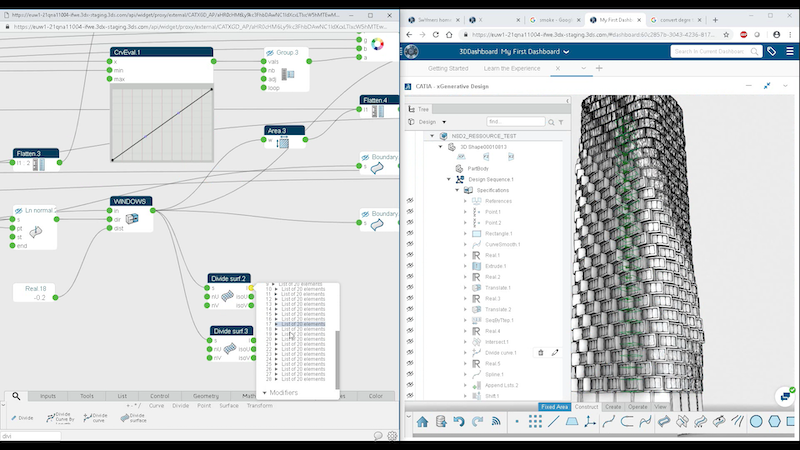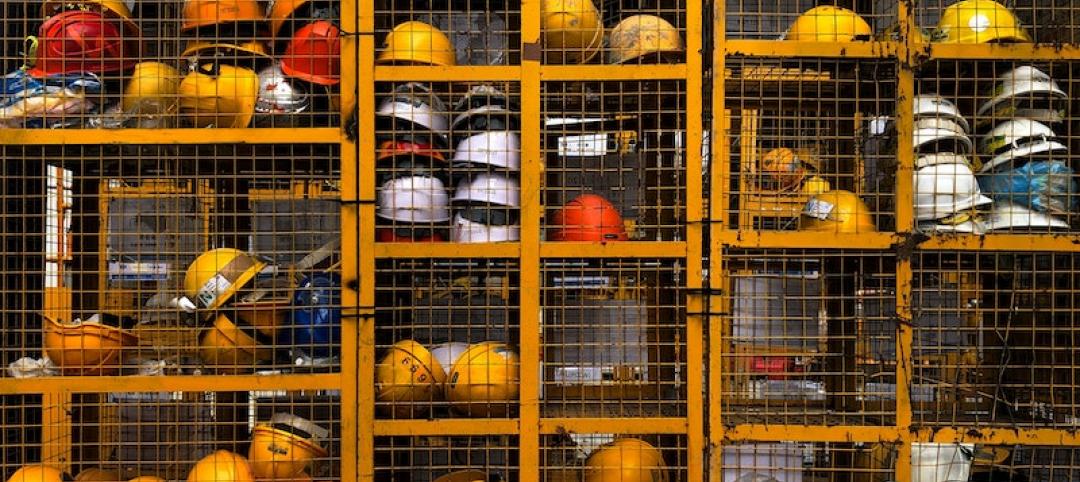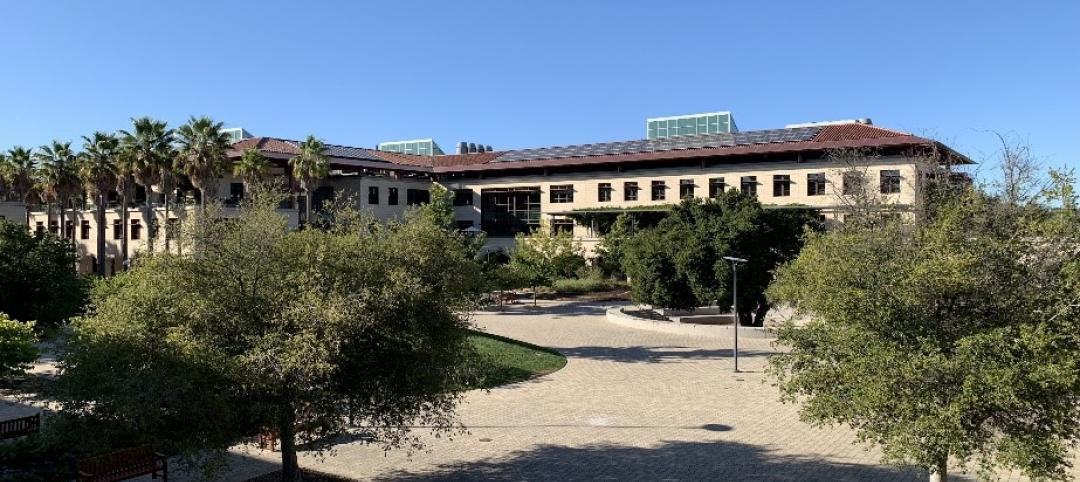No one sets out to make an ugly building. And yet, this is often the result - a walk of any size in any place shows building after building that did not start where it seems to have ended up. By conforming to mediocre construction standards and allowing the tools of the digital age to limit the range of what is possible, the industry has created an environment where what is designed is seldom what is built. Indeed, our first experience of a new design is often a digital rendering or a quick sketch; image manipulation notwithstanding, this is the nicest version of a design we will ever see. In other words, buildings become unattractive in the transition from digital design to physical building.
At VIATechnik, we are changing this by using digital workflows that integrate design practices and construction methods. These workflows are critical to better buildings - a recent report from Dodge Data + Analytics shows that 76% of respondents believe an integrated workflow will have a “high or very high” impact on realizing design intent. From streamlining the design-fabrication-construction process to automation and generative design, VIATechnik, in partnership with Dassault Systèmes, is creating more efficient, more intelligent 3D models that carefully balance the realities of construction with the possibilities of digital design. This is how we will achieve buildings that are both beautiful and functional. In the words of Marcel Dassault, the Founder of Dassault Systèmes: “Ce qui est beau vole bien” or “If it is beautiful, it will fly well.”
Rapid Design to Fabrication Models
 Design model in Rhino 3D into Assembly Design app Source: Rhino 3D and 3DExperience. Click for larger image. Source: VIATechnik.
Design model in Rhino 3D into Assembly Design app Source: Rhino 3D and 3DExperience. Click for larger image. Source: VIATechnik.
Design never wants to stop and construction always wants to start right away - between these two competing ideas is where compromise takes root. As lead times and other construction realities bear down on the design process, the answer is almost always to compromise the design intent. To avoid this, we must directly connect design and fabrication using an intelligent digital workflow known as Model-Based Engineering, in which the design model is the source of all data pertinent to fabrication. In simple terms, it ties together previously disparate digital modeling and fabrication platforms with one language, ensuring the synchronization of geometry, design assumptions, tolerances, and other parameters throughout the versioning process. For example, by importing a faceted glass facade into CATIA from another 3D modeling program, key information can be extracted, such as the size and location of panels. This is then converted to geometric data points that yield a coordination location as well as the number of sides of a panel.
A highly detailed engineering template is then created to link the design model and the fabrication data, and since CATIA returns an ordered list of parts with a unique identifier, each part can be traced back to its origin in the design model. This link allows the level of development of a model to be increased at any time - the template will adjust and update automatically. There is no longer a need to hand-off the model to the fabricator for the more detailed work, where there is a risk of the design intent getting lost. By creating such a flexible, continuous and more collaborative system, we can avoid a “pencils down” approach to design in order to achieve the best design possible.
Design automation
 Bottom of Pipe data is computed in Revit and made available in the Navisworks model Source: Revit and Navisworks. Click for larger image. Source: VIATechnik.
Bottom of Pipe data is computed in Revit and made available in the Navisworks model Source: Revit and Navisworks. Click for larger image. Source: VIATechnik.
Generative Design
Generative design mimics the evolutionary processes and patterns found in the natural world, creating novel, optimized solutions based on a set of input parameters and prioritized design goals. These algorithms can be used to produce complex building forms with optimized modular pieces, demonstrated here by Nicolas Senemaud of Dassault Systèmes. In this example a tower is populated with a series of modular framed openings. The designer controls the overall form, size and number of windows, their orientation, and other parameters, while the algorithm populates the model. Combining this with our rapid fabrication example, one can imagine using this parametric model to create a continuously updating engineering template for prefabrication of these panels, and the ability to trace each module to its precise location in the model.
 Modular tower design with parameters driving the design Source: 3DExperience.
Modular tower design with parameters driving the design Source: 3DExperience.
Taking generative design a step further, these modular panels can be optimized based on other parameters such as cost, ability to be transported by truck, solar exposure; the panels can even be used to drive the form by minimizing the number of curved pieces. In this way, we can use the tools of the digital design age to expand the possibilities of tried-and-true construction techniques, instead of allowing those techniques to limit our imagination.
Conclusion
Now that the age of drafting has ended and building designs are computer generated, it is clear that the capabilities of a software can augment or severely limit the realization of a design, realizing or crippling the possibilities of what can be built. This results in leaky buildings, due to poor building layout and fabrication practices, with little aesthetic value, due to cookie-cutter or sub-par designs limited by the software that was used to generate them, as the accepted standard. VIATechnik strives to balance the realities of construction with digital workflows that bring the design process up to speed. The measure of success is the creation of intelligent 3D models; the reward is a design that is actually constructed into a beautiful building - one without compromise.
More from Author
VIATechnik | Jul 17, 2023
Unlocking the power of digital twins: Maximizing success with OKRs
To effectively capitalize on digital twin technology, owners can align their efforts using objectives and key results (OKRs).
VIATechnik | Apr 19, 2022
VDC maturity and the key to driving better, more predictable outcomes
While more stakeholders across the AEC value chain embrace the concept of virtual design and construction, what is driving the vastly different results that organizations achieve? The answer lies within an assessment of VDC maturity.
VIATechnik | Sep 28, 2021
Getting diversity, equity, and inclusion going in AEC firms
As a professional services organization built on attracting the best and brightest talent, VIATechnik relies on finding new ways to do just that. Here are some tips that we’ve learned through our diversity, equity, and inclusion (DE&I) journey.
VIATechnik | Mar 2, 2021
Retail expectations vs reality in 2021
The reality of retail success in 2021 is proving to be based on a formula of mixing digital with the physical in pursuit of convenience.
VIATechnik | Nov 23, 2020
Agility is the game-changer in the post-COVID world
There has been a fundamental shift in how human beings live, work, and play. The built environment must shift in response.
VIATechnik | Nov 17, 2020
The coming automation of retail brick and mortar
The demise of retail brick and mortar is overstated and unwarranted - we see digital transformation offering brick and mortar a path forward for the physical store.
VIATechnik | Oct 1, 2020
Smart buildings stand on good data
The coming disruption of owning and operating a building and how to stay ahead through BIM.
VIATechnik | Jul 15, 2020
Building pride: A Reflection of LGBTQ rights in construction
The Supreme Court did its job. The rest is up to us.
VIATechnik | May 8, 2020
Data centers as a service: The next big opportunity for design teams
As data centers compete to process more data with lower latency, the AEC industry is ideally positioned to develop design standards that ensure long-term flexibility.
VIATechnik | Mar 17, 2020
A tree grows in Stanford: CIFE, VDC, and where it all began
As our industry adopts VDC as standard practice, it is important to remember where these ideas began and continue to emanate from today.















